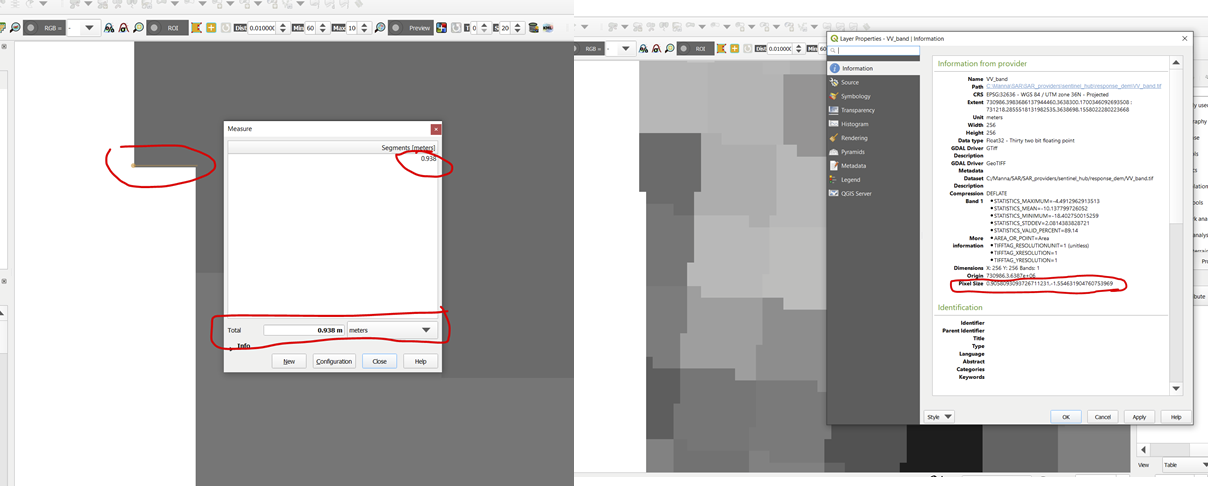I would like to get a Sentinel-1 GRD IW image with a resolution (pixel spacing) of 10 m.
I followed the documentation here https://docs.sentinel-hub.com/api/latest/data/sentinel-1-grd/#resolution-pixel-spacing and added the following arguments:
"resolution":"HIGH",
"acquisitionMode":"IW",
"polarization":"DV"
},
"processing": {
"orthorectify": "true",
"backCoeff": "SIGMA0_ELLIPSOID",
"demInstance":"COPERNICUS_30"
But the image that I get have weird-looking pixels:
This is the full Postman request:
curl -X POST \
https://services.sentinel-hub.com/api/v1/process \
-H 'Authorization: Bearer <your access token>' \
-H 'Accept: application/tar' \
-F 'request={
"input": {
"bounds": {
"properties": {
"crs": "http://www.opengis.net/def/crs/EPSG/0/32636"
},
"geometry": {
"type": "Polygon",
"coordinates": [
[
[
731218.285551813198254,
3638664.083626470062882
],
[
731194.312673397595063,
3638679.522067714948207
],
[
731116.488903416553512,
3638656.200575838796794
],
[
731033.023514467058703,
3638680.746944668702781
],
[
730986.398368613794446,
3638698.155802228022367
],
[
730992.083120428957045,
3638304.788882832042873
],
[
731200.68230208940804,
3638300.170034609269351
],
[
731218.285551813198254,
3638664.083626470062882
]
]
]
}
},
"data": [
{
"type": "sentinel-1-grd",
"dataFilter": {
"timeRange": {
"from": "2021-12-01T00:00:00Z",
"to": "2022-01-12T23:59:59Z"
},
"resolution":"HIGH",
"acquisitionMode":"IW",
"polarization":"DV"
},
"processing": {
"orthorectify": "true",
"backCoeff": "SIGMA0_ELLIPSOID",
"demInstance":"COPERNICUS_30"
}
}
]
},
"output": {
"responses": [
{
"identifier": "VV_band",
"format": {
"type": "image/tiff"
}
}
]
}
}' \
-F 'evalscript=//VERSION=3
function setup() {
return {
input: ["VV"],
output: [{ id:"VV_band", bands: 1, sampleType: "FLOAT32"},
]
}
}
function evaluatePixel(samples) {
return [10 * Math.log(samples.VV) / Math.LN10]
}'



